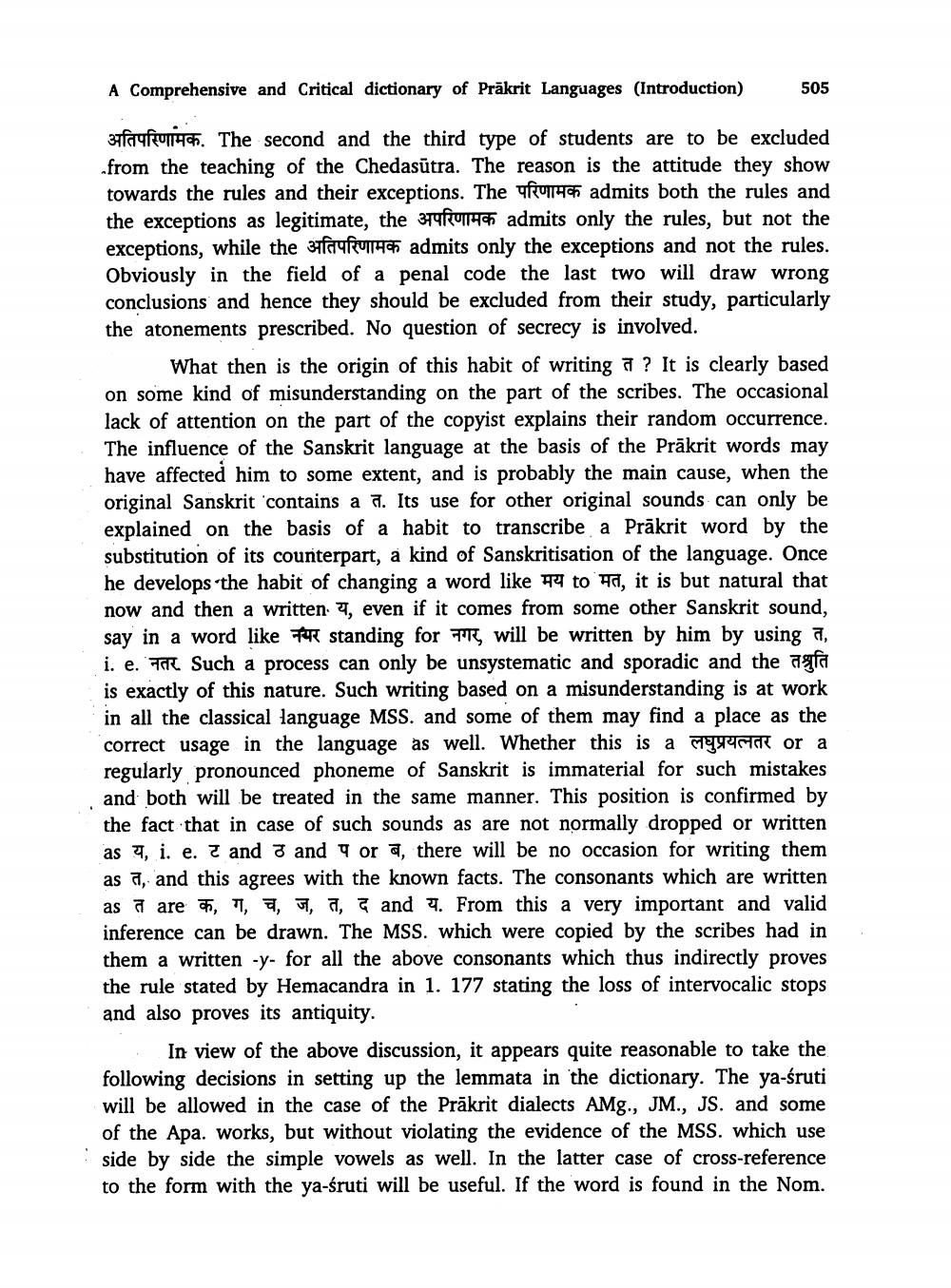________________
A Comprehensive and Critical dictionary of Präkrit Languages (Introduction)
505
3fa4f1|14. The second and the third type of students are to be excluded .from the teaching of the Chedasūtra. The reason is the attitude they show towards the rules and their exceptions. The fu1140 admits both the rules and the exceptions as legitimate, the 374f414 admits only the rules, but not the exceptions, while the sufrufo 140 admits only the exceptions and not the rules. Obviously in the field of a penal code the last two will draw wrong conclusions and hence they should be excluded from their study, particularly the atonements prescribed. No question of secrecy is involved.
What then is the origin of this habit of writing a ? It is clearly based on some kind of misunderstanding on the part of the scribes. The occasional lack of attention on the part of the copyist explains their random occurrence. The influence of the Sanskrit language at the basis of the Prākrit words may have affected him to some extent, and is probably the main cause, when the original Sanskrit contains a 7. Its use for other original sounds can only be explained on the basis of a habit to transcribe a Prākrit word by the substitution of its counterpart, a kind of Sanskritisation of the language. Once he develops the habit of changing a word like 44 to Ha, it is but natural that now and then a written 27, even if it comes from some other Sanskrit sound, say in a word like ture standing for me, will be written by him by using 7, i. e. To Such a process can only be unsystematic and sporadic and the agfa is exactly of this nature. Such writing based on a misunderstanding is at work in all the classical language MSS. and some of them may find a place as the correct usage in the language as well. Whether this is a m usic or a regularly pronounced phoneme of Sanskrit is immaterial for such mistakes and both will be treated in the same manner. This position is confirmed by the fact that in case of such sounds as are not normally dropped or written as 9, i. e. 2 and 3 and 9 or a, there will be no occasion for writing them as a, and this agrees with the known facts. The consonants which are written as त are क, ग, च, ज, त, द and य. From this a very important and valid inference can be drawn. The MSS. which were copied by the scribes had in them a written -y- for all the above consonants which thus indirectly proves the rule stated by Hemacandra in 1. 177 stating the loss of intervocalic stops and also proves its antiquity.
In view of the above discussion, it appears quite reasonable to take the following decisions in setting up the lemmata in the dictionary. The ya-śruti will be allowed in the case of the Prākrit dialects AMg., JM., JS. and some of the Apa. works, but without violating the evidence of the MSS. which use side by side the simple vowels as well. In the latter case of cross-reference to the form with the ya-śruti will be useful. If the word is found in the Nom.




